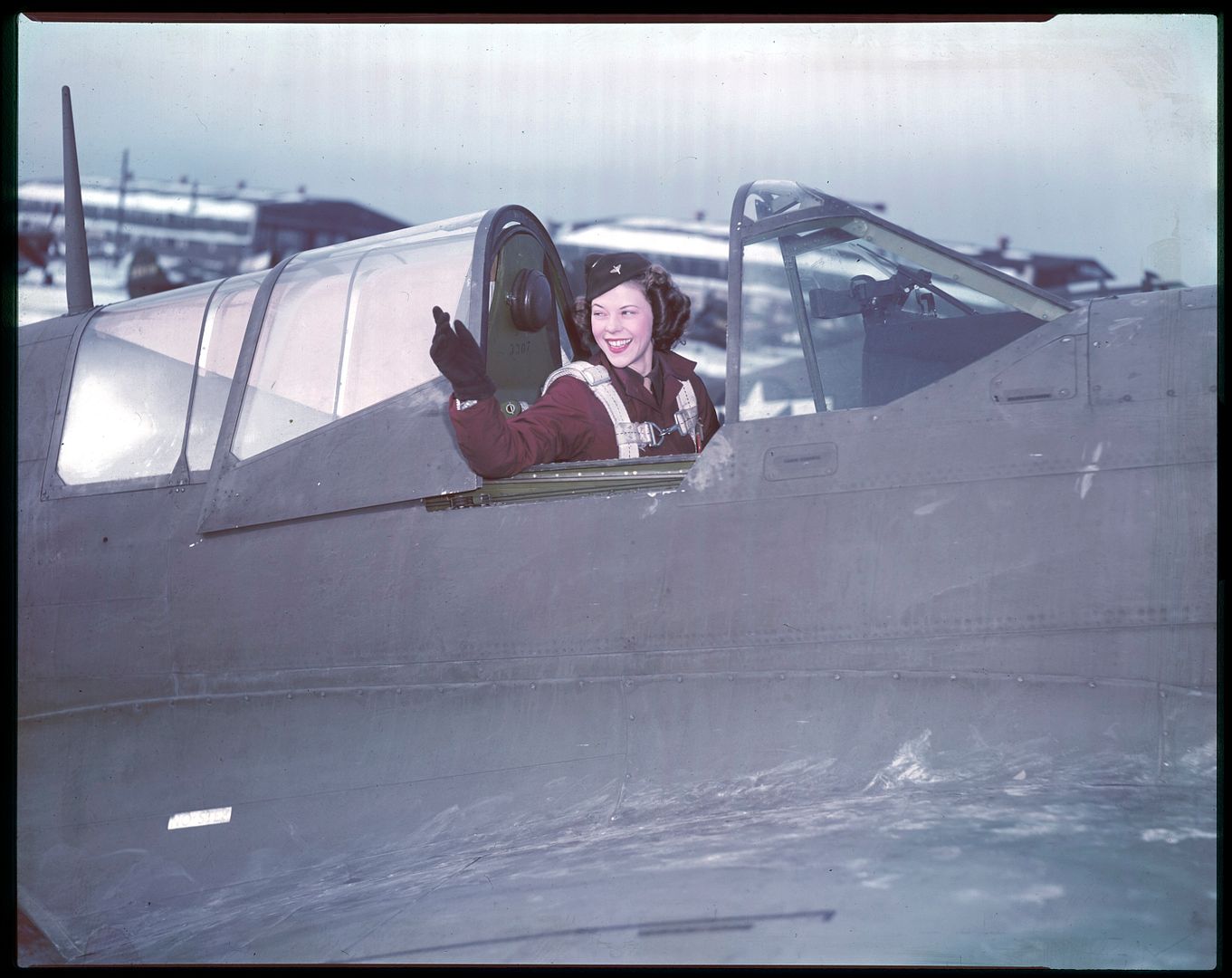(WASP) Betty Jane Bachman
Fri Mar 04, 2016 11:43 am
I came across these wonderful photo's.
The Women Airforce Service Pilots (WASP) was a paramilitary aviation organization. The WASP's predecessors, the Women's Flying Training Detachment (WFTD) and the Women's Auxiliary Ferrying Squadron (WAFS) organized separately in September 1942. They were the pioneering organizations of civilian female pilots, employed to fly military aircraft under the direction of the United States Army Air Forces during World War II. The WFTD and WAFS were merged on August 5, 1943, to create the paramilitary WASP organization. The female pilots of the WASP ended up numbering 1,074, each freeing a male pilot for combat service and duties. They flew over 60 million miles in every type of military aircraft
Each WASP had a pilot's license. They were trained to fly "the Army way" by the U.S. Army Air Forces at Avenger Field in Sweetwater, Texas. More than 25,000 women applied for the WASP, and fewer than 1,900 were accepted. After completing four months of military flight training, 1,074 of them earned their wings and became the first women to fly American military aircraft.
The women were not trained for combat. Their course of instruction, however, was essentially the same as that for aviation cadets. The WASPs thus received no gunnery training, and very little formation flying and aerobatics, but went through the maneuvers necessary to be able to recover from any position. The percentage of trainees eliminated compared favorably with the elimination rates for male cadets in the Central Flying Training Command.
After training, the WASP were stationed at 120 air bases across the U.S., assuming numerous flight-related missions, and relieving male pilots for combat duty. They flew sixty million miles of operational flights from aircraft factories to ports of embarkation and military training bases. They also towed targets for live anti-aircraft artillery practice, simulated strafing missions, and transported cargo. Women in these roles flew almost every type of aircraft flown by the USAAF during World War II. In addition, a few exceptionally qualified women were allowed to test rocket-propelled planes, to pilot jet-propelled planes, and to work with radar-controlled targets. Between September 1942 and December 1944, the WASP delivered 12,650 aircraft of 78 different types.
Thirty-eight WASP fliers lost their lives while serving during the war, all in accidents. Eleven died in training and twenty-seven on active duty.
Above from Wikki.



Enjoy.
Regards Duggy
The Women Airforce Service Pilots (WASP) was a paramilitary aviation organization. The WASP's predecessors, the Women's Flying Training Detachment (WFTD) and the Women's Auxiliary Ferrying Squadron (WAFS) organized separately in September 1942. They were the pioneering organizations of civilian female pilots, employed to fly military aircraft under the direction of the United States Army Air Forces during World War II. The WFTD and WAFS were merged on August 5, 1943, to create the paramilitary WASP organization. The female pilots of the WASP ended up numbering 1,074, each freeing a male pilot for combat service and duties. They flew over 60 million miles in every type of military aircraft
Each WASP had a pilot's license. They were trained to fly "the Army way" by the U.S. Army Air Forces at Avenger Field in Sweetwater, Texas. More than 25,000 women applied for the WASP, and fewer than 1,900 were accepted. After completing four months of military flight training, 1,074 of them earned their wings and became the first women to fly American military aircraft.
The women were not trained for combat. Their course of instruction, however, was essentially the same as that for aviation cadets. The WASPs thus received no gunnery training, and very little formation flying and aerobatics, but went through the maneuvers necessary to be able to recover from any position. The percentage of trainees eliminated compared favorably with the elimination rates for male cadets in the Central Flying Training Command.
After training, the WASP were stationed at 120 air bases across the U.S., assuming numerous flight-related missions, and relieving male pilots for combat duty. They flew sixty million miles of operational flights from aircraft factories to ports of embarkation and military training bases. They also towed targets for live anti-aircraft artillery practice, simulated strafing missions, and transported cargo. Women in these roles flew almost every type of aircraft flown by the USAAF during World War II. In addition, a few exceptionally qualified women were allowed to test rocket-propelled planes, to pilot jet-propelled planes, and to work with radar-controlled targets. Between September 1942 and December 1944, the WASP delivered 12,650 aircraft of 78 different types.
Thirty-eight WASP fliers lost their lives while serving during the war, all in accidents. Eleven died in training and twenty-seven on active duty.
Above from Wikki.



Enjoy.
Regards Duggy
Re: (WASP) Betty Jane Bachman
Fri Mar 04, 2016 6:02 pm
Thats great, thanks
Re: (WASP) Betty Jane Bachman
Fri Mar 04, 2016 8:54 pm
Very nice photos. I bet she thought she was really something.....and she was!!
What is the plywood looking box behind her head? Possibly spare parts or tools inside that go with the aircraft at delivery?
What is the plywood looking box behind her head? Possibly spare parts or tools inside that go with the aircraft at delivery?
Re: (WASP) Betty Jane Bachman
Sat Mar 05, 2016 2:41 pm
AG pilot wrote:Very nice photos. I bet she thought she was really something.....and she was!!
What is the plywood looking box behind her head? Possibly spare parts or tools inside that go with the aircraft at delivery?
I was wondering the same thing?
I have never seen this before?


